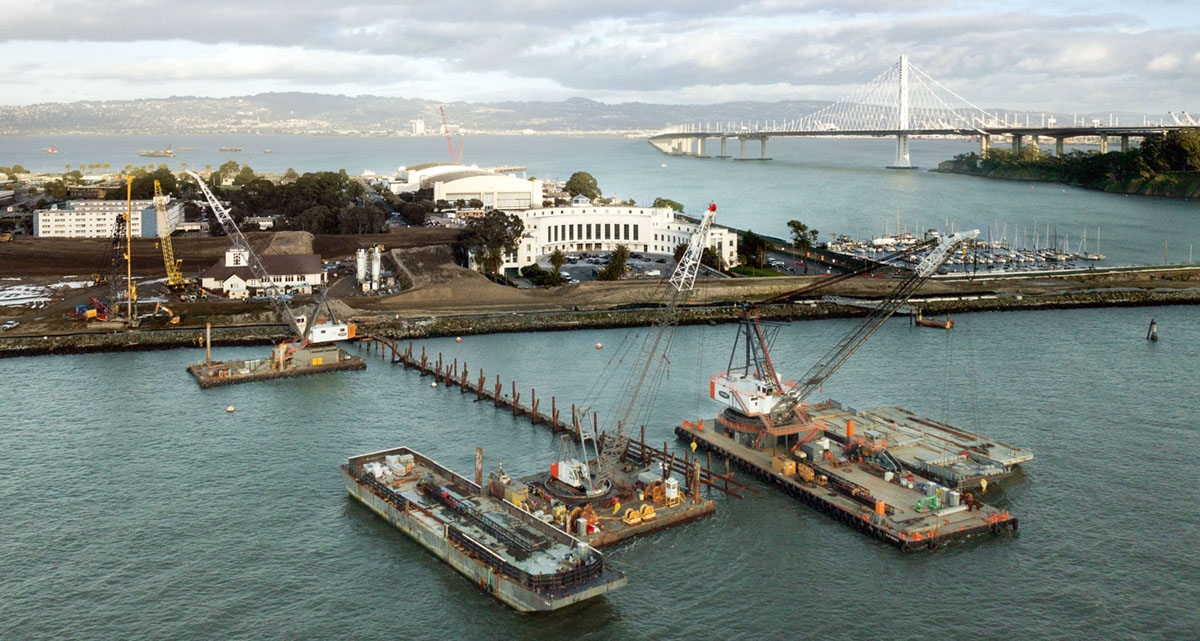By Wendy Fisher
Power Engineering Construction Company (PEC), a heavy civil and marine contractor based in Alameda, CA, is underway on construction of the new Treasure Island Ferry Terminal.
There are two major components of the terminal being designed and built simultaneously by PEC. One is the over-water ferry terminal itself – which marries up to a land-based transportation hub at the entrance to Treasure Island. The ferry terminal is made up of a fixed concrete pier, a gangway, and a steel float; the terminal will support both regional ferries and water taxis.
The second component of the project is a large concrete breakwater designed to protect the ferry terminal from substantial swell and wind conditions inherent on the San Francisco side of Treasure Island. The breakwater will allow ferries to approach and safely land/board passengers at the Ferry Terminal. The breakwater is constructed of 815 lineal feet of continuous vertical precast concrete sheet piling with concrete batter piles every 6 to 18 feet for lateral load strength and a continuous concrete cap cast over both the batter and sheet piling.
Here are some challenging aspects to the project and how they are being overcome:
• New equipment and technology are key to efficient pile driving in unruly conditions.
The western most pile for the fixed pier is extraordinarily large and being driven into just 8-feet of water. The pile is 48-inches in diameter, 185-feet-long, and weighs 65-tons. Piles of this length and weight are typically installed in sections using a drive and weld process, performed in the field, until full length is achieved. The method is labor intensive, especially in an environment with notable wind and wave conditions, and can potentially be a burden on the client’s budget and schedule. Due to the technology and capacity of the derrick barge D.B. Pacific, driving oversized piles in a single section is now achievable and exponentially increases efficiency and pile quality. D.B. Pacific is Power’s newest crane barge with 208-feet vertical reach and a boom capacity of 250-tons. The pile is lofted and tripped utilizing multiple lines and the 8-foot water depth to render the pile vertical. Rigging is kept compact utilizing spreader bars. The pile is driven using an American Pile Driving Equipment model 400 vibratory hammer and diesel D100 impact hammer.
• In the absence of land access, a complete floating construction site is configured.
Due to earthwork and construction taking place on land by others, all work for the breakwater and ferry terminal must be done over water. This includes transportation of crew to the jobsite, delivery and storage of all materials, equipment, tools, work platforms, survey benchmarks and even amenities such as a kitchen and bathrooms.
With a fleet of owned floating equipment, PEC has laid out an elaborate, and necessary, floating construction site. It’s made up of skiffs and small boats for maneuvering, material barges for storage and laydown, and three derrick cranes being used as work horses: a 200 ton ringer crane, a 100-ton derrick crane (D.B. Alameda) and a 250-ton derrick crane (D.B. Pacific).

